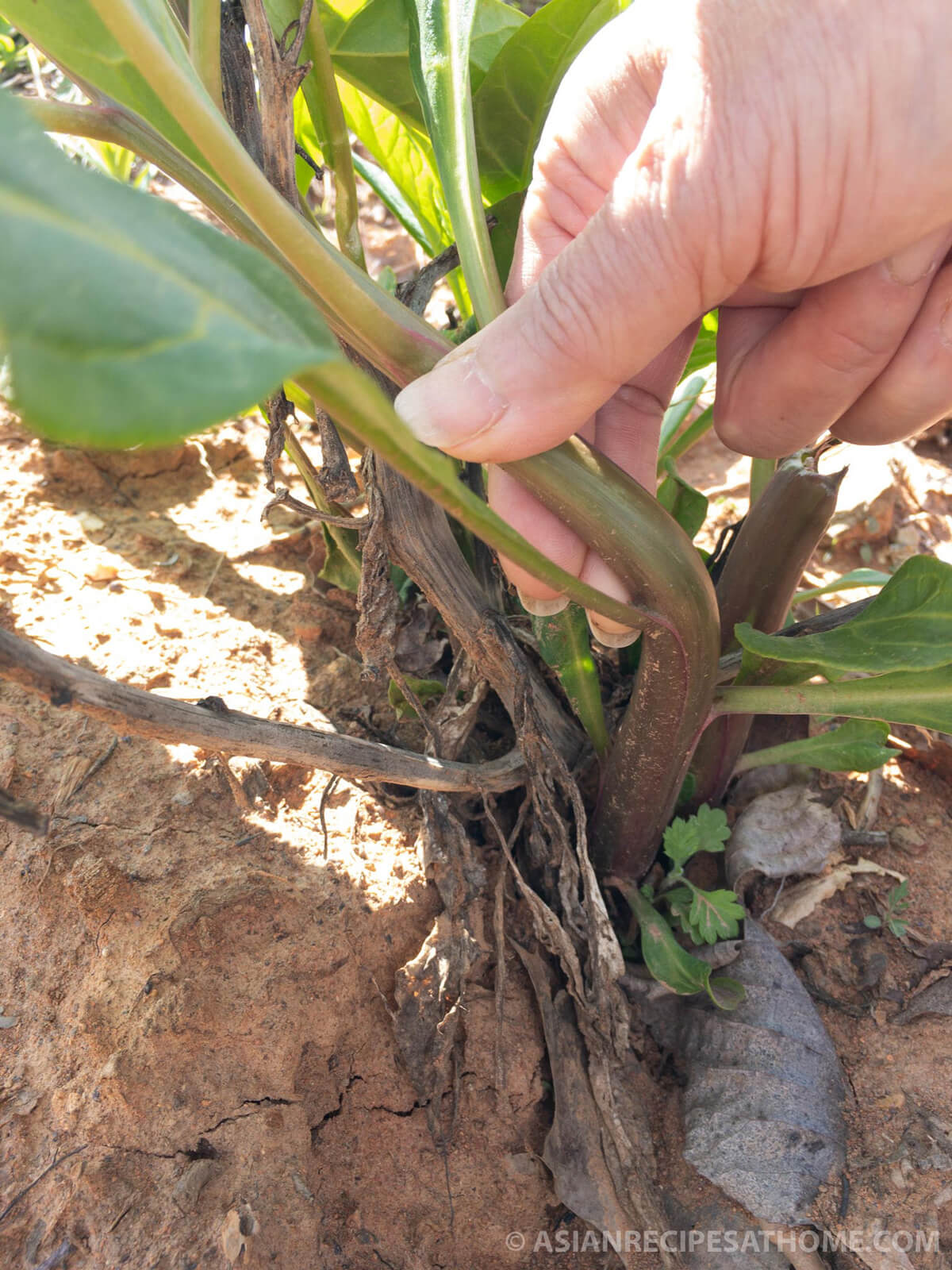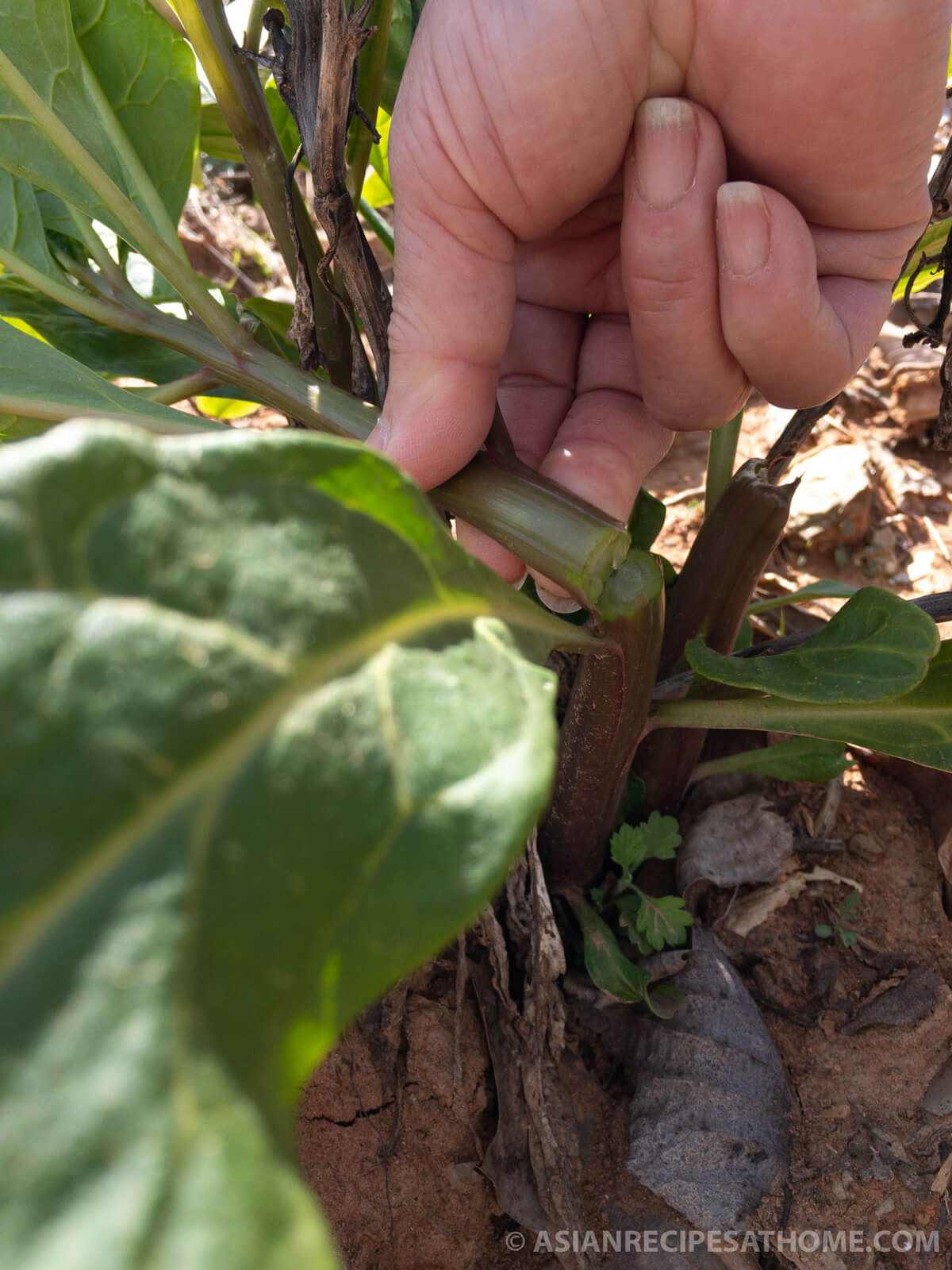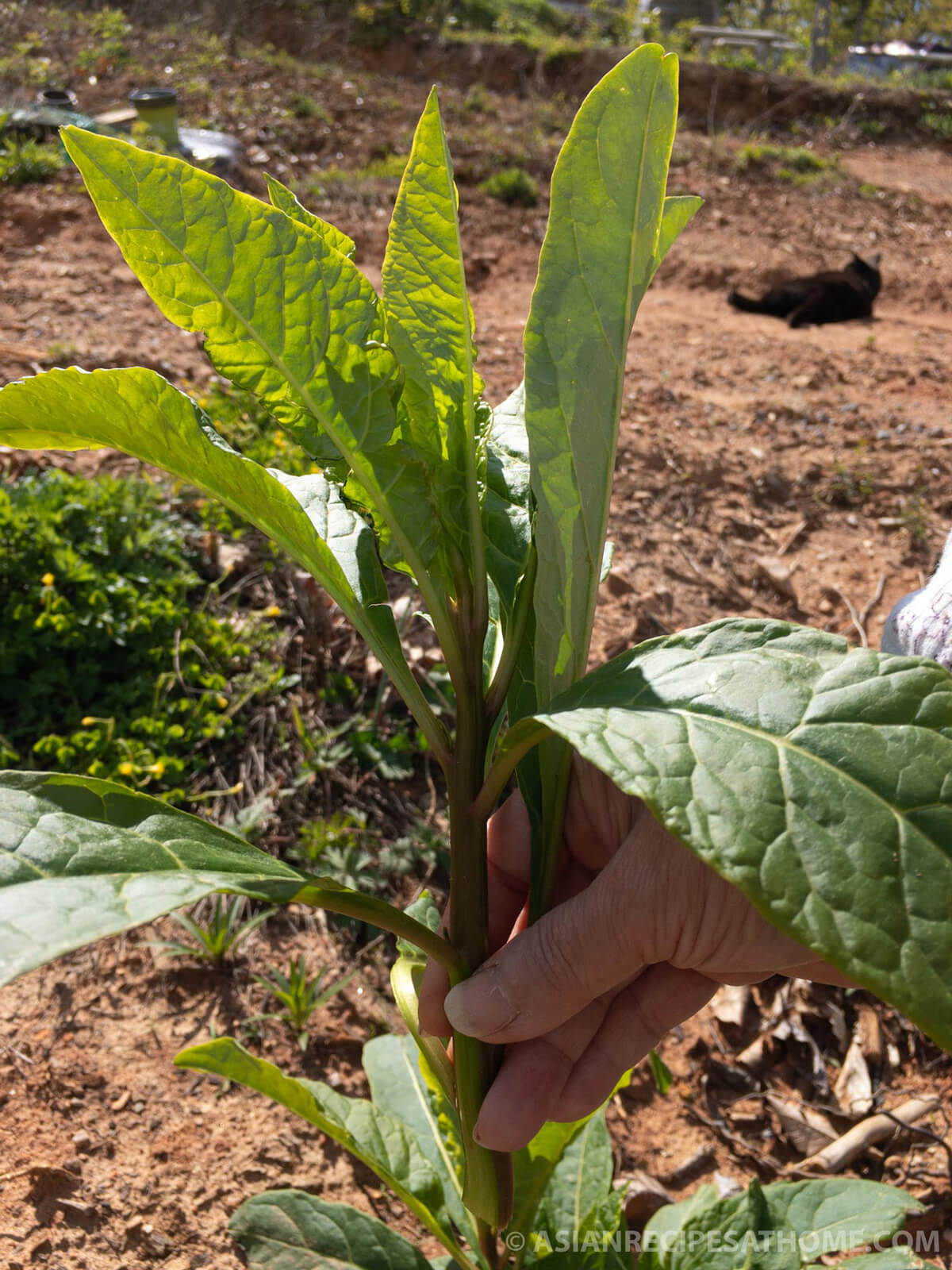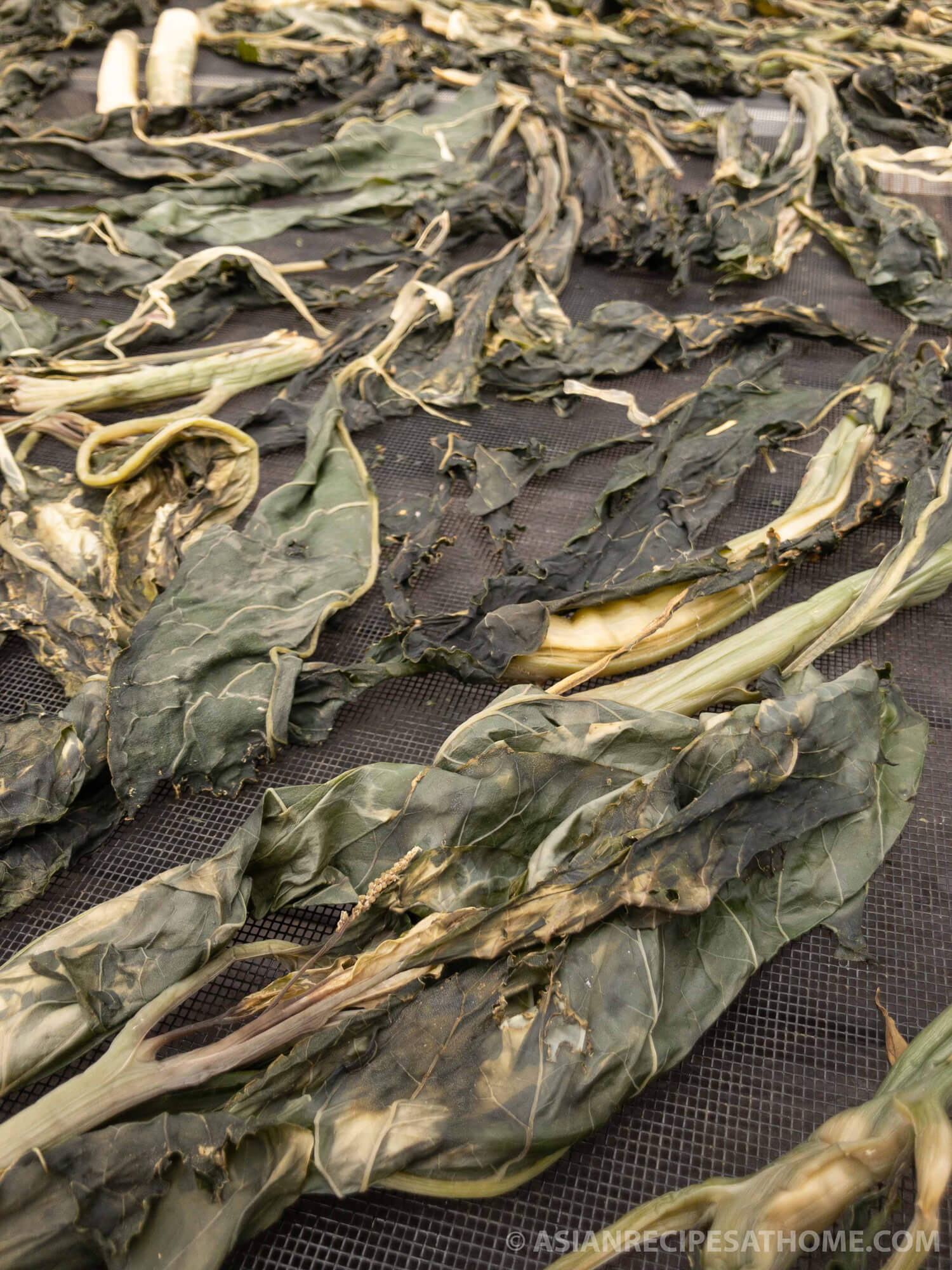Pokeweed is a poisonous, herbaceous perennial that readily grows in many parts of the U.S. in the spring. Pokeweed is also known as poke salad (or poke sallet), inkberry, poke, cancer root, pigeon berry, and American nightshade. Yes, this plant is poisonous in its raw form, however, when cooked properly it is edible and quite delicious. If this is your first time cooking with pokeweed, please take the time to thoroughly read through this entire post to ensure you are properly harvesting and preparing this plant in order for it to be safe for consumption.
A quick disclaimer – We are sharing our own techniques on how we prepare pokeweed for consumption and what has worked for us over the years. It is ultimately your responsibility to properly harvest and prepare this plant for your own consumption. Please use precautions and thoroughly research this topic prior to eating pokeweed, especially if this is your first time cooking with pokeweed. We, in no way shape or form, can be held responsible for any sickness or damages from consuming this plant, since every person is different and the entire preparation process is in fact in your own hands. We are simply sharing what works for us and has worked for us for the past 20 years. Prepare and consume poke plants (pokeweed) at your own risk.
Have we scared you away yet? We are not trying to scare you away from eating pokeweed. Our family has been eating it over the past 20 years, and we are still here with no ill effects from it. We only want to stress the importance of being aware of the potential dangers and to make sure you take every precaution to properly prepare this plant for safe consumption.
Yes, Pokeweed is toxic (unless prepared and harvested properly)
It is a great vegetable to add to your diet, however, only if you cook it correctly before eating. Pokeweed is very toxic to humans and other mammals when eaten in raw form. Pokeweed contains phytolaccine, a powerful irritant that can cause severe gastrointestinal symptoms in humans and mammals. The highest concentration of the toxin, phytolaccine, is typically found in the root forms and the berries (never eat the roots or berries) when compared to the leaves and stem.
As stated in VeryWellHealth, the concentration of phytolaccine gradually intensifies as the plant ages (with the exception of the berries, which are more poisonous when green). In saying this, choosing leaves and stems from a young plant would be most ideal when planning to cook with pokeweed. The best time to harvest pokeweed is when there are no visible berries yet on the young plant, or when the berries are still white. When the berries are green, the harvesting of the plant is questionable and you should consume at your own risk. When the berries start to turn purple, the plant should no longer be considered harvestable for consumption. It would also be best as a precaution to wear gloves when harvesting pokeweed, especially if you’re harvesting a lot at one time.

No visible berries on this young pokeweed plant so it is ready to harvest for poke salad (sallet)
Nutrition and taste
Pokeweed is very nutritious. It is a rich source of vitamin A, vitamin B2, vitamin C, vitamin K, and manganese. A 100g serving of pokeweed contains 20 calories and 3.1 grams of carbohydrates, 1.6 grams of sugars, 1.5 grams of dietary fiber, 0.4 grams of fat, 2.3 grams of protein. After cooking pokeweed properly, the stalks taste similar to asparagus. The leaves have a similar taste and texture to cooked spinach.
Even though it sounds scary to eat pokeweed, don’t worry we are about to share with you our way of preparing pokeweed. My mom has cooked with pokeweed for the past 20 years, so her methods are tried and true for our family. Again, if this is your first time cooking with pokeweed, please take the time to thoroughly go through this entire post first to ensure you are making this plant fit for consumption. If you feel uneasy, do more research first before starting the cooking process to get to the point where you feel confident and comfortable. There are a ton of articles and videos on how to properly prepare pokeweed safely.
How to prepare poke salad (sallet) for our recipes
- Choose a pot that is large enough to handle the amount of poke shoots you harvested (or do this in batches), plus enough water to boil them in. Fill the pot about halfway with water, place on high heat, and bring to a boil.
- Rinse the fresh poke shoots well to remove any dirt. Coarsely chop poke shoots.
- When the water has come to a boil, add the poke shoots to the pot. Stir, so that all poke is submerged in the boiling water.
- Boil for approximately 6 minutes.
- Pour the boiled poke shoots into sieve or colander and rinse in cool water. Discard all of the used boiling water (this contains toxins).
- Place the rinsed poke shoots into a large enough container to submerge the poke shoots completely in cool water for the next 48 hours. During this 48 hour period, drain, discard the water, and then refill with fresh cool water making sure to completely submerge the poke shoots. Repeat this two to three times during the 48 hours.
- After the 48 hour period of soaking, drain and rinse with cool water. Squeeze as much water out of the poke shoots as possible. The poke greens are now ready to use in one of our recipes. You can also freeze or dry them for later use!
How to store excess prepared poke salad (sallet)
Our absolute favorite way to store excess harvest and prepared poke salad (sallet) is by drying it. We boil the poke salad (sallet) and shock it with cold water to stop it from continuing to cook. Then we spread it out in a single layer onto a drying screen. It shrinks up as it dries and is super light in weight, so it’s then easy to store and to use all year-round. When you are ready to use dried poke salad (sallet) in a recipe, simply soak it for the 48 hours in cool water. Make sure to change the water at least two times during the 48 hour period with cool, freshwater. After the 48 hour period and water changes, it’s then ready to use in a recipe.

You could also prepare poke salad (sallet) entirely, which includes boiling and soaking for 48 hours with at least two water changes and then freeze the excess. Once the poke salad (sallet) has been thoroughly and properly cooked/prepared, squeeze as much excess water out as possible. Then simply put it into freezer-safe bags or containers to use later.
Do you love using poke salad (sallet)? Let us know in the comments below!
Our recipes using pokeweed, or poke salad (sallet)
- Asian-style Poke Salad (Sallet) Rice with Spicy Sauce
- Asian-style Stir-fried Poke Salad (Sallet) Greens
- Poke Salad (Sallet) Rice Wraps with Doenjang Sauce
- Stir-Fried Poke Salad (Sallet) Stems
- Korean Poke Salad (Sallet) Soybean Paste Stew (Doenjang Jjigae)
- Korean Spicy Poke Salad (Sallet) Side Dish (Muchim)
HUNGRY FOR MORE? Subscribe to our newsletter and follow along on Facebook, Pinterest, Twitter, and Instagram for all of the latest updates.
Disclaimer: Under no circumstances shall this website and the author(s) be responsible for any loss or damages resulting from the reliance of the given nutritional information or ingredient/product recommendations. Recommended ingredients/products can change their formula at any time without this website and author’s awareness. It is your responsibility (the reader’s) to check the label/ingredients of any product prior to purchasing and/or using. We greatly appreciate your support and understanding.






2 comments
I have eaten Poke all my life and I am 75 years old.
I boil it 3 times in fresh water, then eat it like greens with a little vinegar.
I also dehydrate it to have over winter.
Before first frost is expected I will cut the stalks, strip off hard outer part, cut it, batter it the same as I do Okra. Taste just like it.
I harvest new shoots all year long and keep the berries pinched off my plants.
Have made dye with the berries.
Never made juice out of the berries yet nor eaten 8 of them raw. Would also do that if got arthritis in the future.
Hi Darnell! Thank you for sharing your own personal experience with using Pokeweed! We love it too.